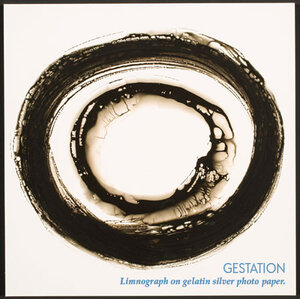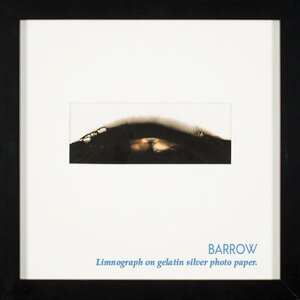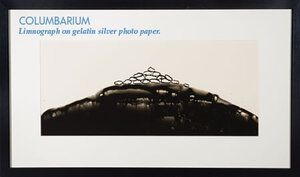The life of an artist is relaying the exploration of a mountain that nobody else gets to experience. Carol Chase Bjerke has been in the professional world of art for decades, and she’s traveled all over her mountain of adaptive context, spending time in the greenery of the foothills, the trials of the nival storms, and even reaching the summit a time or two. Whether ascending or descending a moment in life, Carol’s outlook is constantly evolving through aspect.

I met Carol in her studio, which probably once doubled as the basement of her house but has taken on a distinction all its own with years of accumulated works piled in corners and displayed on walls. Getting pieces off the floor during last year’s flood led to the wall opposite her workstation being covered in spontaneous groupings of artwork. “The work represents a long period of time,” says Carol. “And it’s interesting for me to see it this way because even as I continue to make new work, and move what I think is ahead, I’ve been thinking there really should be a retrospective that would tell the story of the connection between all these bodies of work that I’ve done over a period of 40-some years.”
As random as it seems at first glance, the wall has an amusing connection to many of Carol’s projects, as they are often meant to compel audiences to take things out of order, rearranging what is presented and reinventing context. Consider her boxed sets, gelatin silver prints on photo cards. Audiences take a series of photos and rearrange them in unique ways. The thought exercise is as creative as it is meditative, confronting order and chaos while challenging conventions of time and place.
Integrating a kinesthetic element into her pieces harkens back to a pastime Carol relishes. “I like the idea of holding the photo in your hand. It’s reminiscent of the days when we used to get the prints back from the photo finisher, and you leaf through them and spread them out. Poke through them and pick out the ones you like.” She doesn’t have a smartphone or a digital camera, and anything that disrupts the tactile experience of developing a photo and holding it once it’s developed wouldn’t be true to her joy in the art. It’d be a disruption of process.

When I look at Carol’s love for things that aren’t perfect, I see a connection to her 2008 book, Hidden Agenda —a collection of pictures, journal entries, and thoughts Carol amassed through her experiences with her colorectal cancer diagnosis in the mid-1990s and recurrence in 2000. “I think of the Art & Healing work as three phases.”
Phase one takes the form of a collection called Life Boat, illustrating the first diagnosis when everything seemed to turn out alright. There’s something hypnotic in the repeated showing of ripples in the water and boats without oars. Alongside a lot of sadness and weight in the images, I also see a lot of hope. An acknowledgment of flow—everything having a reason and working itself out.
Phase two features the Hidden Agenda series, which is about the recurrence. Medical supplies and physical anomalies were used to create unapologetic hyperrealities, two of them being Misfortune Cookies and rose-tinted glasses with images of stomas on the lenses. Living with an ostomy isn’t just something you learn to live with, it completely alters how you view yourself and arrange your life around self-care. One photo is of a wallpaper Carol did. “I carved this little rubber stamp of a stoma, and for an entire year, I stamped 110 of these every day because, if you use the statistics from the United Ostomy Association, that’s the average number of people that have the surgery every day. … I’m grateful for what the medical community did for me, but there are times where it feels like they’re just stamping you out.
“Part three of the Art & Healing work was what took me back to the dark room. Part of the medical supplies—the sealant that holds the appliance to your body and keeps it all discrete—you use a sealant, you draw a circle with it. And it’s like every few days changing medical supplies. At one point, somebody gave me a book about the Japanese Zen masters that draw enso circles. It’s a meditation. So I set up a copy stand in my closet and started photographing these circles before I used them. My Enso series was another meditative year-long project.”

Carol’s journey through cancer was taken without choice and with no destination in mind, and through it she was able to digest aspects of her life once left unexamined, her voyage through the human experience. Her attempts to share those experiences become intimate conversations with each individual who interacts with her works. The vein of universal reality she tapped into, an ever-obstructed view of optimism somewhere amongst pain, survival, and everyday mundanity, took her to create something rather unique in the world of photography.
“This is a process that I have named limnography. Limnograph. You won’t find that name anywhere else.” Limnography weaves Carol’s knowledge of photography into the meditative nature of her pieces through process rather than product. “I expose the photo paper to room light, and then I draw on it with the developer using a brush or sponge. There’s a delay between the time the fluid hits the paper and the time the image appears. It’s like drawing with invisible ink. It started with drawing the enso circles, and then I realized I could use it to draw other things, like the stone forms for the Touch/Stones series and mountains.” The work she makes from limnography has an intriguing depth in character, as though the image is still developing or is starting to fade away, reflecting the transient quality of an idea and the mind holding it.
Carol’s motif of stone and mountain certainly stands as a metaphor to her life and work, and much of it can be explored on her website, carolchasebjerke.com. She also has many ongoing projects, including Twin Mountain, a collaborative book and exhibition with Albuquerque painter Carol S. Hinote projected for completion in 2021. A recent printing of Life Boat is available from Borderland Books, borderlandbooks.net , as is Hidden Agenda. Carol’s most recent artwork can be found at Abel Contemporary Gallery in Stoughton, currently in an exhibition called Thaw.
-Kyle Jacobson is a copy editor for Madison Essentials, and a writer and beer enthusiast (sometimes all at once) living in Sun Prairie, Wisconsin.
